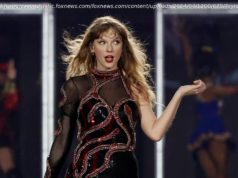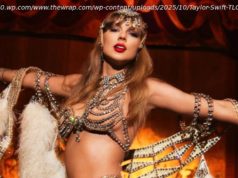The pop star’s reported shaping of the September cover hints at the shifting relationship between the media and their subjects—and between creators of color and traditional gatekeepers.
Control, meet control: The legendarily exacting editor Anna Wintour has handed the legendarily exacting singer Beyoncé some rule of the legendarily influential Vogue. In an unprecedented arrangement reported by The Huffington Post, the cover and some inside photos of the forthcoming September issue have been orchestrated and selected by the subject rather than the editors. Beyoncé will not break her years-long avoidance of traditional interviews with journalists, but she will write her own “long-form” captions. This will be for Vogue ’s largest and most-scrutinized annual edition—possibly the final September issue of Wintour’s 30-year tenure before she retires.
The arrangement has been hyped as novel, but it comes as the culmination of a long trend: the waning dominance of old-media institutions in relation to new-media stars. As has been much observed, celebrity magazines lost power when famous people became able to easily conduct their own image-making, unfiltered, on social media. A similar story has unfolded across sectors of the society (does a president need to submit to an Oval Office interview when they have Twitter?), and America’s most obsessed-over public figures can now demand enormous concessions in the rare instances they grant access to publications.
Those publications, meanwhile, hunger for the conversation-starting abilities of someone like Beyoncé (or Drake or Taylor Swift, both of whom have also been more or less on an interview blackout). So sometimes stars get to, say, pre-approve questions, select their interviewer—or, now, arrange a photo shoot without an interview at all. Doing so runs clearly afoul of conventional media ethics: When the subject gets to edit their own story, any claim to objectivity vanishes. But, more cynical observers might ask, how much presumption of objectivity is there by readers of Vogue at this point anyway? Most are savvy enough to know that all celebrity access is negotiated on some level.
The negotiation, in this case, carries special significance. Beyoncé picked September’s images to be shot by the up-and-coming Tyler Mitchell, marking the first time that a black photographer has done the cover of Vogue in the magazine’s 126-year-history. “The reason a 23-year-old black photographer is photographing Beyoncé for the cover of Vogue is because Beyoncé used her power and influence to get him that assignment,” someone close to the process told The Huffington Post ’s Yashar Ali. Almost certainly the gig will greatly propel the career of Mitchell, who graduated from New York University last September.
Coming in the same year that Beyoncé and her husband booked the Louvre to shoot a rap video, Kendrick Lamar won a Pulitzer prize, and Virgil Abloh ascended to creative director of Louis Vuitton, the Vogue news firms up a pattern: the triumphing of black pop-culture figures in elite and largely white institutions that have traditionally (and often perniciously) shaped the West’s definition of excellence. Racism has long been a well-documented feature of the fashion world, typified in Vogue ’s own gaffes over the years involving blackface, caricature, and appropriation. British Vogue went from 2003 to 2013 without a solo black cover model, and last year Naomi Campbell called out outgoing editor Alexandra Shulman for a monochromatic staff photo. Given this context, Beyoncé getting the reigns to the Vogue flagship supports her (and Jay-Z’s) insistence that by amassing one’s own fame and fortune within an unequal system, one can gain the power to change that system.
What exactly will she do with that power? “ Vogue says thinner is better,” Beyoncé sang skeptically on 2013’s “Pretty Hurts,” a song about the harmful effects that society’s beauty standards can have on women. Some critics see her as a hypocrite for often striving to embody those same standards, but it’s undeniable that she has marbled more and more subversion into her public performances, whether with her depiction of her own pregnancy or with her hoodie-bedecked Coachella show. Perhaps the September issue will make a daring statement like 2016’s Lemonade did. Perhaps it will bring only pretentious promotion for an athleisure line. It’s meaningful that the call will have been hers, either way.






